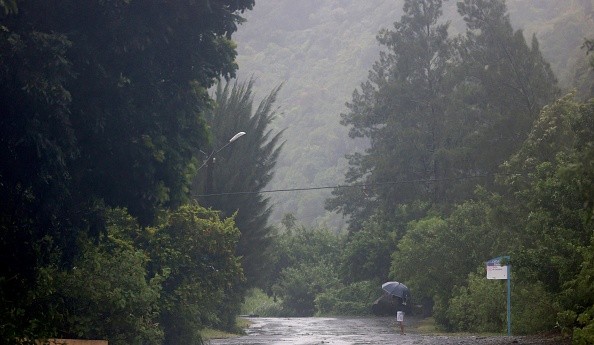The National Weather Service predicted strong winds, warm weather, and rain in the San Francisco Bay Area throughout the next week.
Since none of the weather patterns will be severe, according to weather service forecaster Roger Gass, they will have some ups and downs.
"Over the following week, it'll be more of a gradual roller coaster ride," Gass said. "We're not going to have any huge rain events or heat waves; we're just going to drift towards spring."
Weather in San Francisco Bay area
 (Photo : RICHARD BOUHET/AFP via Getty Images)
(Photo : RICHARD BOUHET/AFP via Getty Images)

From 8 p.m., the weather service announced a wind alert for the North Bay and East Bay hill this Wednesday till 11 a.m. Thursday.
Then, there will be a seasonably cool until weather Thursday as yet another dry, cold front sweeps through the region, and that's when people see an increase in the strong offshore winds, according to Gass.
The highest winds will be near the beaches, in the hills, and along the ridges, with gusts of 45 to 60 mph possible.
People may notice the windy conditions in metropolitan areas, according to Gass, but the weather agency does not expect broad effects, as per SFGate.
The winds will die down Thursday afternoon and evening.
On Thursday, temperatures will be seasonably chilly, with afternoon highs in the mid-50s to 60s.
The weather will change on Friday as high pressure rises throughout the region, raising temperatures. Sunny skies are expected, with highs in the 60s and 70s in the afternoon.
The warm weather will continue into Saturday, but the tail end of a passing storm may bring light showers to the northern section of Sonoma County in the evening.
Another risk of rain enters the forecast for Sunday evening and Monday. That one, according to Gass, may be more common.
Raindrops may be seen all the way into San Francisco. Then things dry out again, with a drying trend continuing throughout next week.
Also Read: Meteorologists are Tracking Monstrous Bomb Cyclone Developing Near the West Coast
Bomb cyclone drenched Bay area on Tuesday
Severe thunderstorms, such as the enormous bomb cyclone that flooded the San Francisco Bay Area in October, are expected to become even more violent in the future decades as meteorological conditions change due to climate change.
As per a new research authorized by the city and conducted by the Lawrence Berkeley National Laboratory, the Bay Area might get between 26% and 37% more water from these mega-storms by the end of the century, as per the San Francisco Chronicle.
According to Dennis Herrera, managing partner of the San Francisco Public Utilities Commission, the city conducted the research to assist prepare for increased weather instability, so that San Francisco's facilities is not overloaded by rainwater in addition to rising seas.
Information was obtained from five storm surges between 1982 and 2014 to recreate how rising temperatures might influence these damaging weather events.
Researchers used supercomputer simulation to examine how a variety of temperature increases in the atmosphere, ocean, and bay would affect storms.
Despite the fact that each mega-storm may bring more rain, other climate change research indicates that water may become increasingly limited in general.
The specific science is unclear: some studies predict that California will receive more rain in the future as a result of climate change, while others predict that it will receive less rain.
In any event, the vital mountain snowpack for the state's water resources is predicted to decrease by two-thirds by the end of the century.
Related article: Bomb Cyclone: Atmospheric Scientist Explains Everything You Need to Know About This Winter Storm
© 2024 NatureWorldNews.com All rights reserved. Do not reproduce without permission.

![Climate Change is Reducing Dust Levels Worldwide as Arctic Temperature Warms [Study]](https://1471793142.rsc.cdn77.org/data/thumbs/full/70320/280/157/50/40/climate-change-is-reducing-dust-levels-worldwide-as-arctic-temperature-warms-study.jpg)



